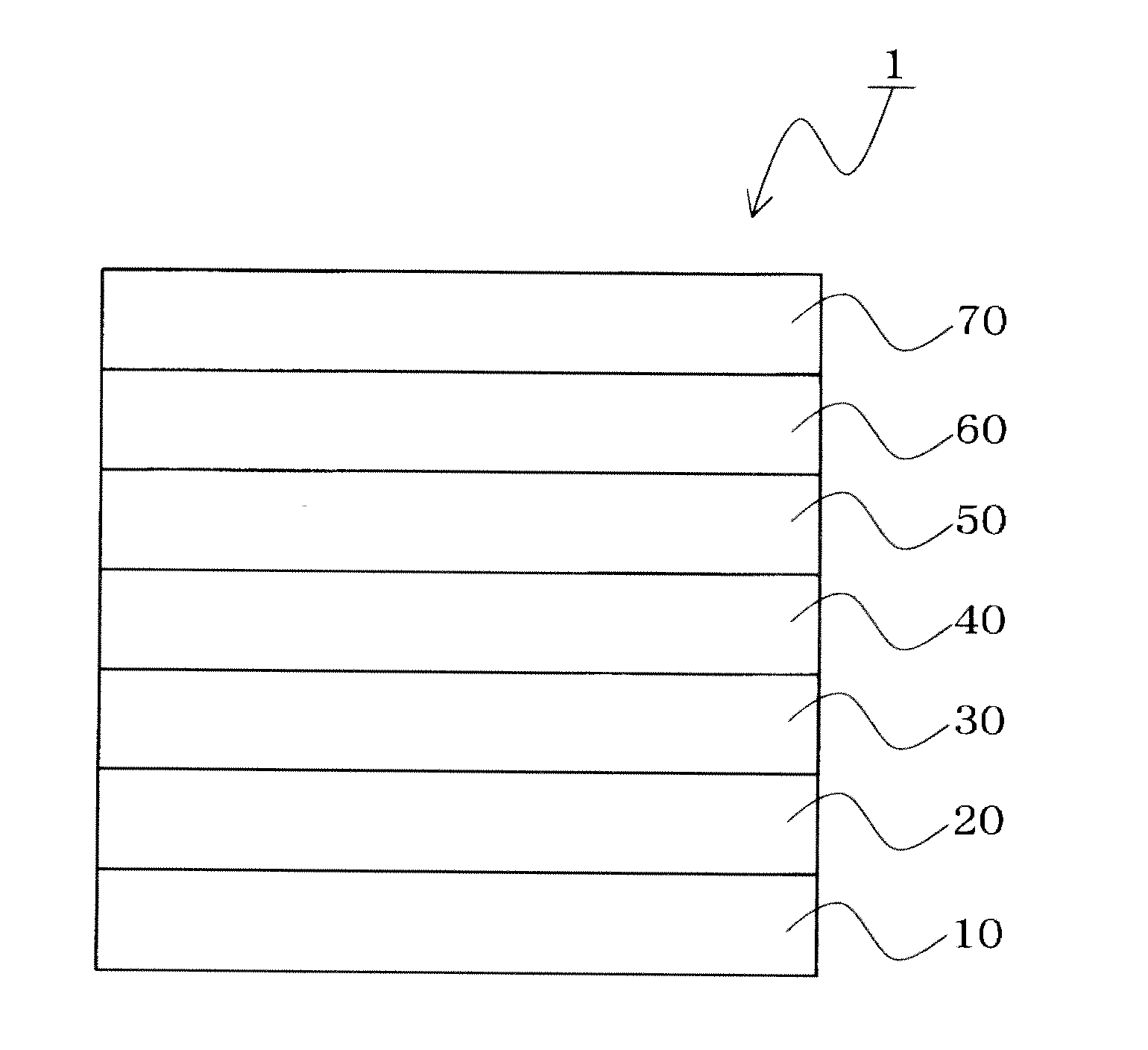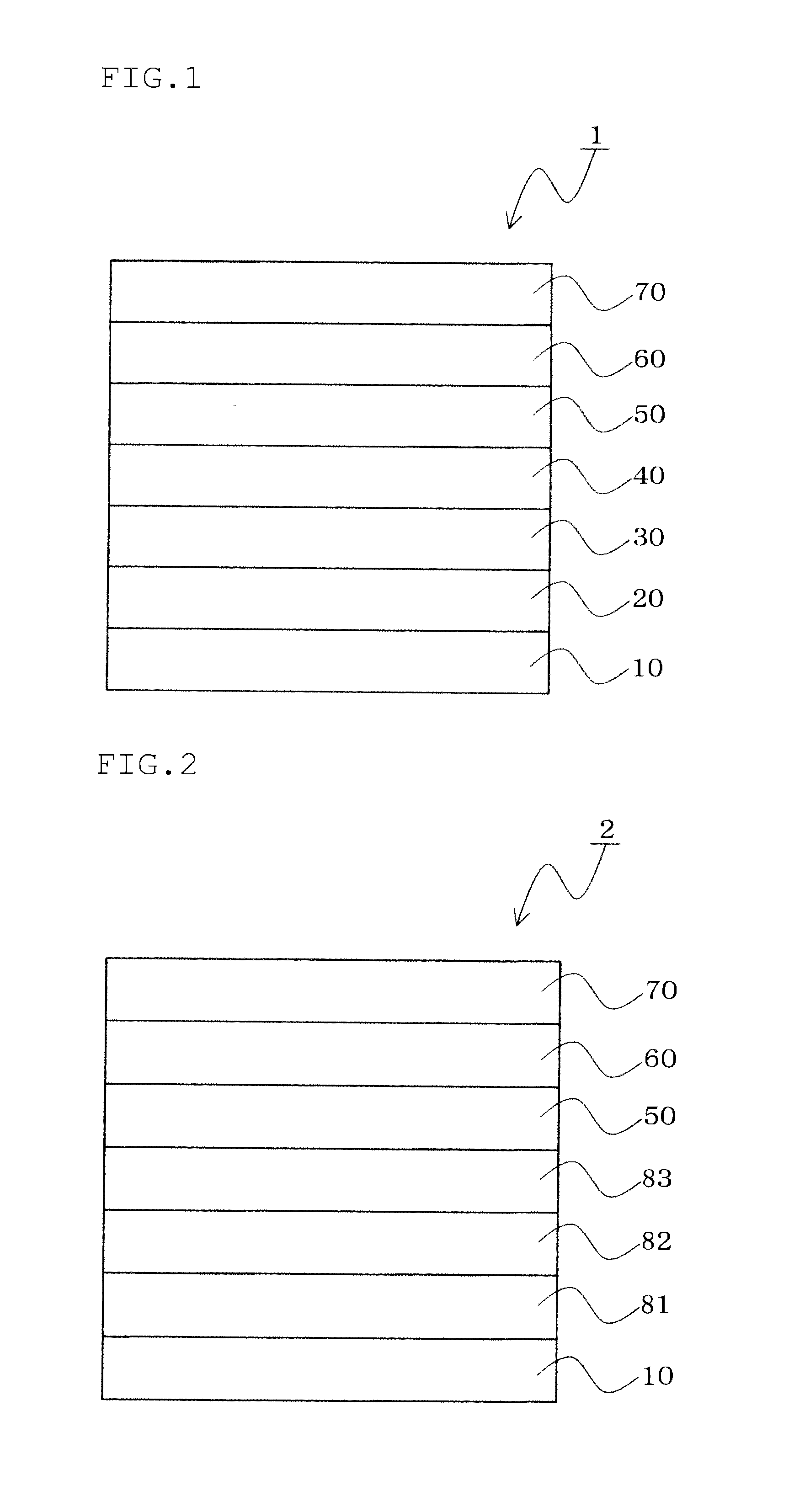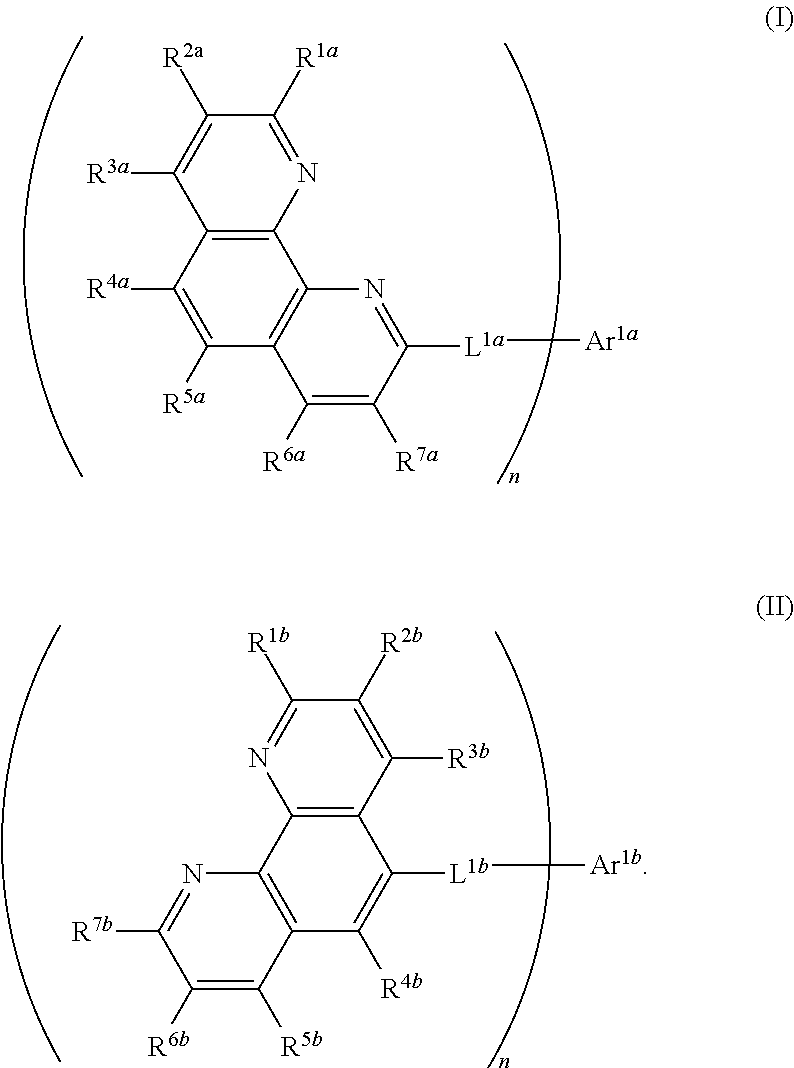Organic electroluminescence device
- Summary
- Abstract
- Description
- Claims
- Application Information
AI Technical Summary
Benefits of technology
Problems solved by technology
Method used
Image
Examples
examples 1 to 15
[0142]On a glass substrate having a dimension of 30 mm×30 mm, ITO was formed in a thickness of 240 nm as an anode. Subsequently, by deposition of SiO2, a cell for an organic EL device in which other parts than emitting regions of 2 mm×2 mm were masked by an insulating film was fabricated.
[0143]On the anode, as a hole-injecting layer, hexanitrileazatriphenylene ((HAT) represented by the following formula) was formed in a thickness of 10 nm.
[0144]On the hole-injecting layer, a hole-transporting layer, a blue-emitting layer and an electron-transporting layer were formed in this sequence.
[0145]Specifically, as the hole-transporting layer, the compound represented by the following formula (α-NPD) was formed into a 90 nm-thick film by the vacuum vapor deposition method (deposition speed: 0.2 to 0.4 nm / sec).
[0146]Subsequently, on the hole-transporting layer, the blue-emitting layer was formed. As the host for the emitting layer, the compound represented by the following formula (1) was use...
PUM
 Login to View More
Login to View More Abstract
Description
Claims
Application Information
 Login to View More
Login to View More - R&D
- Intellectual Property
- Life Sciences
- Materials
- Tech Scout
- Unparalleled Data Quality
- Higher Quality Content
- 60% Fewer Hallucinations
Browse by: Latest US Patents, China's latest patents, Technical Efficacy Thesaurus, Application Domain, Technology Topic, Popular Technical Reports.
© 2025 PatSnap. All rights reserved.Legal|Privacy policy|Modern Slavery Act Transparency Statement|Sitemap|About US| Contact US: help@patsnap.com



